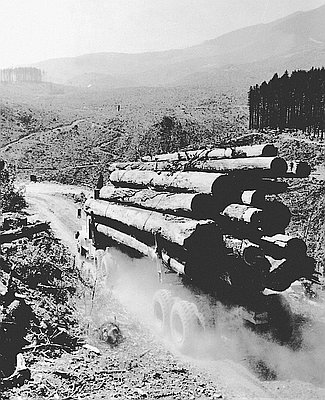The Timber Industry Climax
The new century saw a booming growth in the timber industry, and its emergence as a large-scale industrial enterprise. Driven west by the wholesale cutting-over of forests in Minnesota and Wisconsin, lumbermen made quick use of the new railroads to Oregon and new access to national forest lands. With the “easy” timber gone from forests near tidewater and navigable streams, beginning in the 1890s lumber companies used railroad technology to build networks of temporary trackage into the woods. Logging railroads not only brought timber to the mill, they also used tremendous quantities of wood in their construction, little of which was recoverable. The tracks were laid on wooden ties, and gullies and canyons were bridged by massive timber trestles and bridges. Some bridges were simply cribs of unprocessed logs, left to rot in the woods after the trees were cut. The locomotives also burned wood for fuel, as did the steam-donkey engines that pulled the fallen trees by long wire cables to a landing place, where they were placed on railroad cars for the mill. The legacy of this industrial logging was clear-cut forestlands laced with railroad grades and debris-choked ravines.
The new mills were large, with several Oregon mills successively claiming to be the “world’s largest” during the decades before World War II. They were powered by steam, commonly generated by burning the refuse of the mill operation itself—sawdust, bark, trimmings, and “mill ends.” Most new mills shipped their product to the Midwest or the East by railroad. Some along the lower Willamette and Columbia rivers and at small coastal ports such as Coos Bay, Newport, and Brookings were “cargo mills” that shipped lumber to California and overseas by ship but that usually brought their logs to the mill by railroad.
In eastern Oregon, the completion of the transcontinental railroad through Baker City in 1884 prompted loggers to eye the extensive pine forests of the Blue Mountains. During the 1890s, the narrow-gauge Sumpter Valley Railroad built westward, reaching Prairie City in 1910. The Sumpter Valley supplied logs for mills at Baker City and fostered a network of smaller independent sawmills and logging railroads, giving them an outlet to the national rail system. In western Oregon, a railroad between Portland and Tillamook was completed in 1911, spawning the huge Whitney Company mill at Garibaldi and other mills at Cochran, Timber, and Tillamook. The timber industry reached a high point in the 1920s, with large companies developing mills, railroads, and company towns such as Valsetz and Hines that were totally focused on converting standing timber to lumber.
© Richard H. Engeman, 2005. Updated by OHP staff, 2014.
Sections
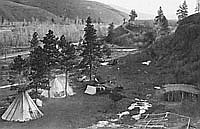
Native Ways and Explorers' Views before 1800
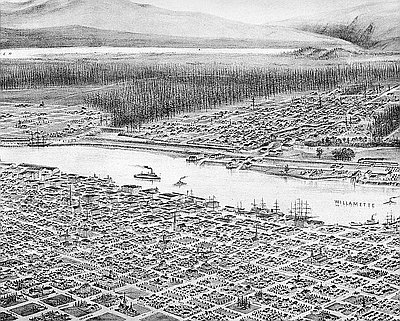
Euro-American Adaptation and Importation
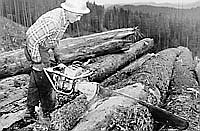
Sawn Lumber and Greek Temples, 1850-1870
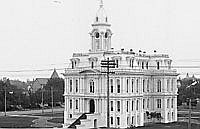
Architectural Fashions and Industrial Pragmatism, 1865-1900

Revival Styles and Highway Alignment, 1890-1940

International, Northwest, and Cryptic Styles
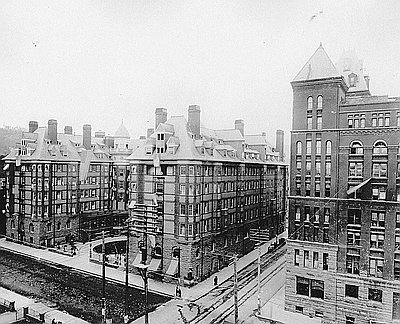
Glossary

Built Environment Bibliography
Related Historical Records
Camp Two, Coos Bay Lumber Company
A moving community of loggers is depicted in this 1930 photograph. From the 1890s through World War II, major logging operations in Oregon were railroad-based, with trackage extending …
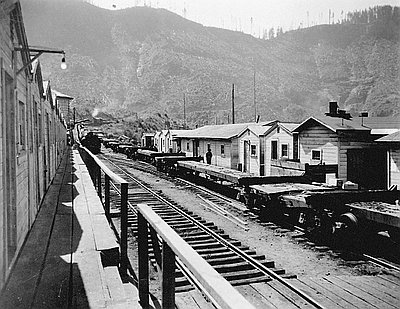
Coos Bay Lumber Company Steam Donkeys
The steam donkey, invented in 1880, greatly increased the efficiency of logging operations in Oregon’s forests. It replaced animal labor, which could not work as fast in rainy …
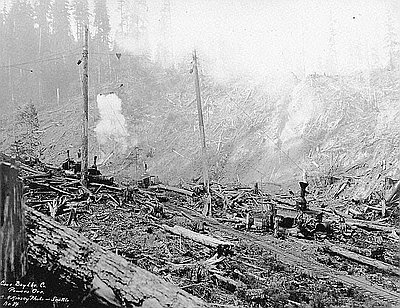
Log Truck Stirs Dust through Clearcut
This undated photograph from the Timberman is identified as being from the Pacific Northwest. Although the title accompanying the photograph in the collection identifies the surrounding logging operation as …
